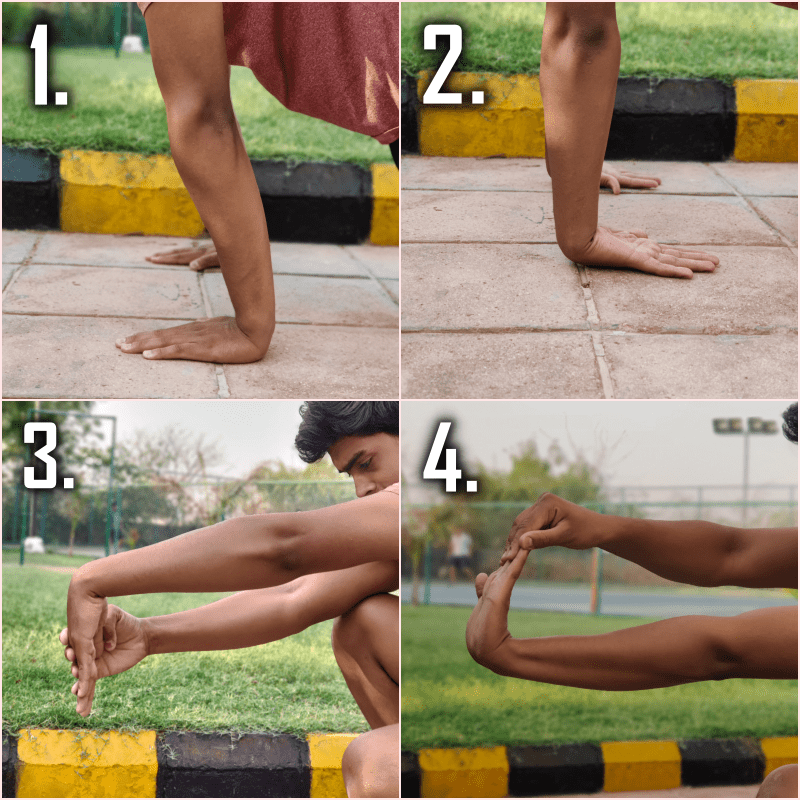
This is an issue that is faced by a lot of people it doesn’t matter if you’re a high-level functioning athlete that’s used to training or someone who stays behind the desk all day long. You’re going to have an adaptive shortening in your forearms muscle that is situated at the back of your arm that can cause forearm supination pain.
About Supinator
The supinator muscle is situated at the posterior (further back in position or hind end) compartment of your forearms. The word “supinator” itself suggests the work of the muscle it’s responsible for supination. The word supination means rotation of your hand and forearms so that the palm faces forward or upward.
Example – For the left-handed person the supination is used to loosen a screw and for a right-handed person, supination will be used to tighten a screw.
This repeated movement can easily cause put pressure on our supinator muscle leading you to experience pain.
The structure of the supinator muscle has relatively great width and breadth meaning it’s a broadly shaped muscle that is situated in the superior and posterior compartment of the forearms. It consists of two layers of fiber and it starts to curve around the upper third of the radius.
The supinator muscle starts to origin from the ulna and humerus, and the two fiber layer starts to originate from the same area that is the supinated crest of the ulna, the lateral epicondyle of the humerus, the radial collateral ligament, and the annular radial ligament. (1)
The supinator works along with the biceps brachii if a powerful supinator needs to be performed however biceps brachii can only work and provide extra support to supinate the arm when the elbow is not extended if the elbow is fully extended biceps brachii cannot supinate the arm.
A common cause of forearm supination pain
Whenever you over-exhaust a muscle, you push your body to extremes without giving it time to recover which can often cause wear and tear of the muscle. Ignoring these minor wear and tear will only lead you to more pain that’s also the same in the case of forearm supination pain.
The common cause for most to experience forearm supination pain is overusing of the muscle by doing the same repetitive movements that involve the supination of the forearm and pronation of the forearm or due to contact contraction of muscle while in supination.
For example
- Turning a screwdriver or shoveling
- The continuous swinging of a racket or a bat.
- In gym while performing chin-ups or dumbbell supination.
When you’re suffering from forearm supination pain it may cause pain on the outer side of the elbow joint or you will feel pain at the back of your hand, between your index finger and thumb finger. Sometimes when you have forearm supination pain it can lead to numbness or feeling tingling on hand and wrist that on the thumb side.
When the supinator muscle is being overused it can be shortened that can lead to limiting your range of movement in your forearms for that limited range of movement shoulder starts to compensate and doing so can dramatically increase the risk of a shoulder injury.
The condition associated with forearm supination pain
These are the two most common condition that is associated with supinator pain.
- Supinator syndrome
It happens due to the compression of the posterior interosseus nerve as it exits and enters the supinator muscle that’s why it is also known as posterior interosseus syndrome. Posterior interosseus syndrome or supinator syndrome usually happens spontaneously and the cause of it is the compression injury at the upper extremity. You will feel pain in your upper forearms that can sometimes make you feel it at the wrist. in some of the worst-case scenarios, it may result in weakness in the wrist extensor.
2. Tennis elbow
It’s a painful condition and it occurs when the tendon situated in your elbows is overloaded, this over-exhaustion of the tendon happens due to repetitive movement of the arm and the wrist. Even after being named tennis elbow, it isn’t necessary that you need to play tennis to be at risk of this condition it is also known as lateral epicondylitis.
People suffering from tennis elbow hopes that by ignoring the pain it will go away but if you let tennis elbow untreated it can turn into a debilitating injury (affecting someone’s strength and ability to carry through with regular activities) that can lead you to surgery.
Stretches for forearm supination pain
Stretching a muscle is simple because when you break it down the function of the muscle or the group of muscles and when you do the opposite movement or push them beyond the range of motion you will be stretching them out. Understanding the function of the muscle is easy nowadays because of all the research and google can tell you about that and if you do the opposite you will stretch those muscles out.
Disclaimer – This information is not an alternative to seeking professional medical treatment, always consult with your doctor before starting these exercises.

- Forward & Back wrist stretch.
- Upside-down wrist stretch.
- Downward pull wrist stretch.
- Upward pull wrist stretch.
These are some of the basic gentle stretches that can be done at home it will help you decrease the pain that you feel in the associated supinator muscle by increasing the blood flow to the tissues and it will also aid in reducing the stiffness and spasm in your forearms. The unique thing about your wrist and forearm stretching is that you can move it in any direction and you’ll feel mild tension.
Bonus stretches
This is an active motion exercise, It’s a little bit different than simple stretches.
To do this exercise – If you have something that you can hold onto like a pen or a highlighter (any object that doesn’t have any weight). Now hold onto that object with your hand forming a punch and try to supinate your arm also try to supinate your forearm in one step. Do it at least 6 to 8 times and try to hold for 2-3 seconds at every supination.
Sometimes when trying to supinate people often try to compensate for supination by using fingers and twisting the wrist, all in order to get that forearm to rotate, and that can cause soreness and pain to your fingers or wrist.
Other ways to treat forearm supination pain
Heat
Heat is a very effective form of pain relief that helps us by increasing the blood flow to the affected area and it starts to relax the muscle, increasing the range of motion, and flexibility. When there is an increase in blood flow circulation to the affected area it also increases the injury healing properties that are delivered to the muscles, helping in repairing the muscle, and reducing supination pain thus applying a heat pack to the supinator muscle will help you treat your forearm supination pain.
Trigger point release
The trigger point release is a procedure that means relaxing the muscles by targeting the trigger points, trigger point release is usually done by a manual procedure that involves stretching the muscle and pressure. Trigger point releases should be done by a professional.
Final words
It is okay if you feel mild tension while stretching but if you feel any kind of pain you should stop and you should consult with a doctor before you start stretching again they will be able to assess your situation and develop the right stretching program suitable for you.